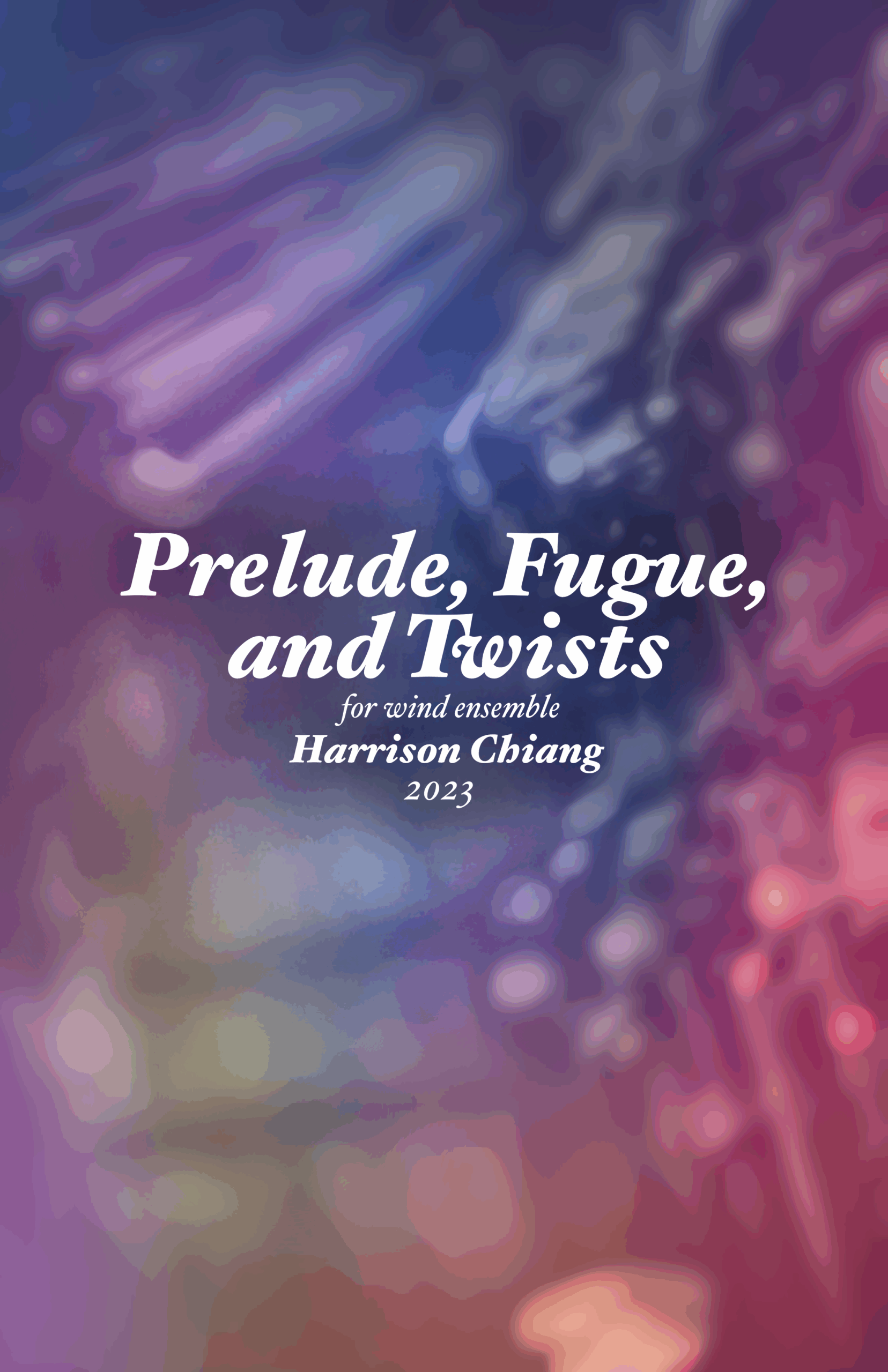
$125.00-$150.00
The idea of a prelude and fugue dates all the way back to the 18th century. This long standing form was enjoyed by many prominent composers, the most notable being the many preludes and fugues of J. S. Bach. Strict guidelines and rules litter the form and nowadays it has become almost obselete, however with its legacy carried on through the teachings of counterpoint. However, what if you were to take the form and style, twist it (pun intended), and formulate something
truly bizarre?
Throughout this work I utilized the prelude and fugue form as a loose basis, exploring the ensemble in a way almost like a concerto for wind ensemble. The subject of the fugue originally would have been a straightforward and easy to follow 6/8 feel, but where’s the excitement in that? Hence the frantic and hectic fugue switching between multiple meters every second, loosely adhering to traditional counterpoint.
(P. S. There is no 3rd movement called “Twists.” My friends always ask me “Where’s Twists???” but in my opinion the piece is better left off at the ending of the Fugue. Just think of the Twists being woven in to the fabric of the Prelude and Fugue)
Premiere performance by Santiago High School Festival Winds on May 8th, 2024.
View Perusal Score
Score and Parts (PDF) – $125.00
Score and Parts (Physical) – $150.00 + shipping
Contact us for inquiries or to place an order!
Instrumentation
1 – Piccolo
2 – Flute 1
2 – Flute 2
1 – Oboe
1 – Bassoon 1
1 – Bassoon 2
1 – Contrabassoon
1 – E♭ Clarinet
2 – B♭ Clarinet 1
2 – B♭ Clarinet 2
2 – B♭ Clarinet 3
1 – E♭ Alto Clarinet
1 – B♭ Bass Clarinet
1 – E♭ Contra-alto Clarinet (doubles B♭ Contrabass Clarinet)
1 – B♭ Contrabass Clarinet
1 – B♭ Soprano Saxophone
1 – E♭ Alto Saxophone 1
1 – E♭ Alto Saxophone 2
1 – B♭ Tenor Saxophone
1 – E♭ Baritone Saxophone (1)
1 – E♭ Baritone Saxophone 2 (doubles B♭ Bass Saxophone) (opt.)
1 – B♭ Bass Saxophone
1 – B♭ Trumpet 1
1 – B♭ Trumpet 2
1 – B♭ Trumpet 3
1 – B♭ Flugelhorn 1
1 – B♭ Flugelhorn 2
1 – B♭ Flugelhorn 3
1 – F Horn 1
1 – F Horn 2
1 – F Horn 3
1 – F Horn 4
1 – Trombone 1
1 – Trombone 2
1 – Bass Trombone
1 – Euphonium (BC/TC)
2 – Tuba
1 – Timpani
1 – Percussion 1:
Vibraphone, Ratchet, Snare Drum
1 – Percussion 2:
Bass Drum
1 – Percussion 3:
Tam-tam, Suspended Cymbal, Crash Cymbal
1 – Percussion 4:
Marimba, Glockenspiel, Xylophone, Crash Cymbal, Tam-tam
1 – Piano
– The low reeds are vital to the piece, especially for the fugue. If possible, all low reed parts should be covered (Bassoons 1-2, Contrabassoon, Alto Clarinet, Bass Clarinet, Contra Clarinets, Baritone Sax, Bass Sax). However if not all parts are available, one contra instrument should be sufficient, preferrably contrabass clarinet and dropping contrabassoon and bass sax.
– An alternate 2nd baritone saxophone part is provided if no bass saxophone is available.
– If both contra-alto and contrabass clarinets are used, the contrabass clarinet should play the solos.
– The 2nd alto saxophone part may be omitted if doubling on soprano saxophone.
– With regards to trumpet and flugelhorn parts, all 6 parts should be covered if possible. If no flugelhorns avaliable, the parts may be played by trumpets or cornets. In the event that there are less than 6 players, the parts should be prioritized in this order: 1st trumpet, 1st flugelhorn, 2nd trumpet, 3rd trumpet, 2nd flugelhorn,